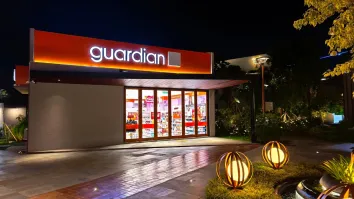Five focus areas for retailers beyond the GSS
The iconic Great Singapore Sale (GSS) goes online this year as the retail industry creates a “new normal” shopping experience amid the COVID-19 pandemic. This may well be a sign of more disruption to come as consumer habits evolve and retailers recalibrate their business strategies.
When physical stores opened doors in Phase 2 of the reopening of the economy amid the COVID-19 pandemic in Singapore, the initial appearance of more shoppers at malls may have created optimism for many retailers. Yet, footfall has remained depressed given the lack of office crowds and tourist arrivals.
As walk-in sales disappoint, many retailers are turning to online sales channels to boost revenues. In fact, many have been compelled to do so since the onset of the Circuit Breaker measures. This shift in emphasis from physical to online retailing is disrupting the entire industry – and could have a more enduring impact on the retail scene than first imagined.
Even Singapore’s longest running sale, the Great Singapore Sales (GSS), is going online for the first time in 25 years through a mix of online deals, virtual workshops, live-streaming activities and virtual reality shopping experiences – pointing to how retailers will need a new strategic playbook.
While the e-GSS sales can help to shore up revenues that have been hit hard during store closures, retailers must not neglect dealing with the multifaceted ways in which the industry has been impacted by COVID-19. This includes global disruptions in supply chains, constantly evolving health and safety regulatory requirements, as well as changing consumer behavior and spending patterns.
According to the EY Future Consumer Index, which tracks the sentiment and behavior of consumers on a monthly basis across the globe, new consumer segments are emerging: those who are value-conscious and health-conscious; those who want purposeful brands that reflect their environmental and social values; and others that simply want to enjoy each moment that life offers.
To adapt to the changing consumer and broader disruptions to retail, there are five areas that retailers can consider:
1. Adopt an omnichannel strategy and invest in online presence
To drive online sales, marketing and promotional tactics such as gift-cards and creating social experiences on social media are useful but beyond that, retailers should take a holistic and comprehensive approach to build an omnichannel strategy that integrates both online and offline channels seamlessly.
Having said that, there should be due consideration to shifting investments from offline to online in the current climate. With online, retailers should explore the innovative use of social media marketing and communicate directly with consumers using person-to-person (P2P) messaging apps to drive customer engagement. This requires retailers to customize their marketing communication strategies to the different communication platforms and target audience segments. Couple that with the use of data and analytics in marketing, retailers can also better drive their online visibility, especially for high-demand and profitable product categories, to the right target audiences.
2. Drive supply chain resilience with diversified sourcing
More than ever, retailers need to regularly review product sources to reinforce supply chain resilience and agility. Retailers should take the opportunity to secure reliable local sources and plan for long-term collaboration to hedge against disruptions in international trade. This also helps with reinforcing the sustainability agenda.
Executing good demand planning by increasing stock levels for items in high demand, identifying substitutable brands or products, and collaborating with principals to match supply with demand, are good practices to implement. Retailers can also consider regional inventory hubs to mitigate supply disruptions and, where necessary, direct shipments to high priority distribution centers and stores in high-risk areas.
Given possible resource constraints, embracing technology can help reduce dependence on labor and iteratively fine-tune automatic replenishment algorithms to accommodate the latest demand trends.
3. Expand offerings to meet evolving consumer needs
Retailers can look out for increased demand for specific product or service categories, and take the opportunity to further drive private label penetration to deliver value for both consumers and the business. They can enhance their target value proposition by driving customized promotions and offering value packs for economies of scale.
For food-related products, it is also opportune to focus on grocery home delivery and expand into the cloud kitchen space, capitalizing on the growing demand for food delivery.
4. Consider strategic acquisitions for faster growth
Even with the current pandemic, M&A deals remain a powerful way to reshape portfolios and accelerate the transformation imperative. Experiences from SARS and the global financial crisis showed that in a recovering market, the M&A landscape often presents high-quality acquisitions at lower valuation multiples and helps to fuel faster growth.
5. Drive agility by empowering decision-making
Shifts in consumption patterns, regulatory changes, resource fluctuations and competition in the local markets make speedy decision-making necessary. To achieve this, it is key to establish and empower a senior cross-functional local leadership team with a defined ambit to manage issues on the ground. The goal should be to execute agile plans and prioritize speed over perfection in response to volatility.
The leadership team will need to galvanize support from stakeholders externally to reinforce close relationships with existing partners and identify high-potential partners beyond the current portfolio. It will also need to do so internally to manage the morale and motivation of the workforce.
Collectively, the five areas demand a whole-of-business transformation that goes beyond simply implementing online sales channels in silos. From what we have seen in previous crises, retailers that embrace change are more likely to emerge as leading businesses while those who persist in conducting business-as-usual will fall behind.
The authors are Olivier Gergele, EY Asean Consumer Products & Retail Leader.
The views in this article are those of the authors and do not necessarily reflect the views of the global EY organization or its member firms.



















 Advertise
Advertise






